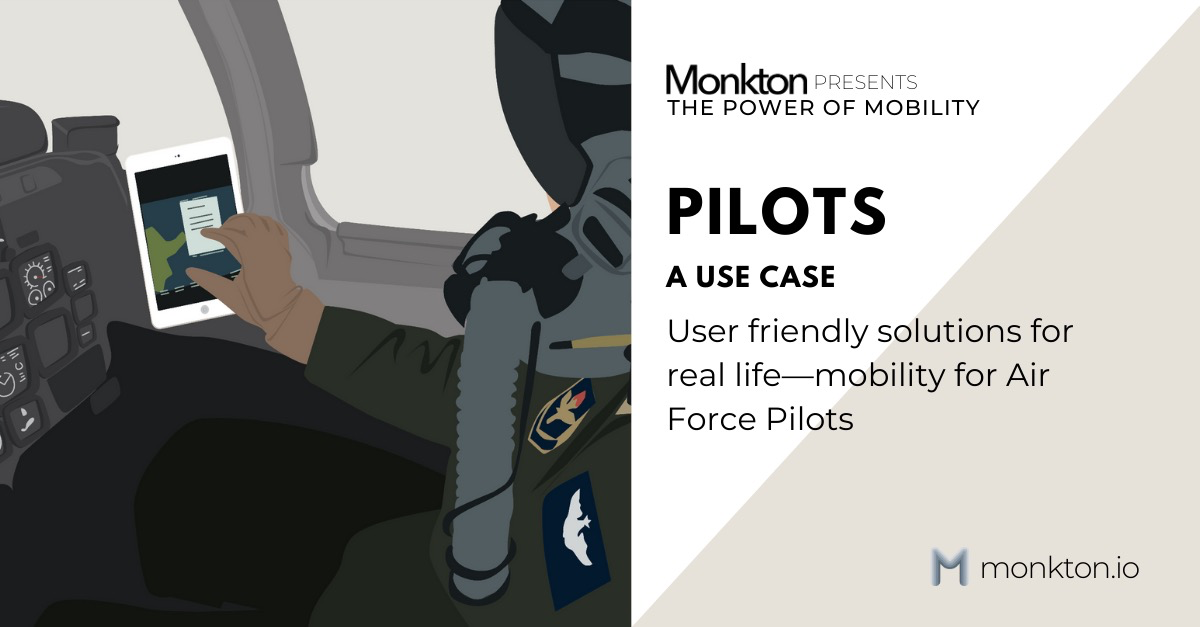There are people who fly planes, and those who don’t. The non-pilot folk likely assume that any given pilot has the ability to simply show up for work, ready and able to fly on a moment’s notice. While that notion isn’t entirely false, the simplicity of tinkering with a few levers and checking the weather before takeoff is a made-up narrative generally regarded as false.
The truth of the matter is that an Air Force pilot quite literally steps into a time machine when she or he enters an aircraft. Imagine for a second you’re a pilot. You’ve got your clean and pressed flight suit on; possibly a new pair of aviator sunglasses to block out the harsh rays; the ascent up the airstairs toward the entrance of the aircraft has been made where the wind is blowing just right to, wait for it…blow away over 100 pounds of your paper-based aeronautical and flight regulation charts to the ground below. Not exactly the Top Gun moment you envisioned.
When it comes time to document disaster sites, mobility provides countless We have FedEx to thank for the deliverance of on-time packages, and also for the commercialization and adoption of the electronic flight bag (EFB). An EFB is any portable electronic display hardware intended to replace paper-based data regarding the aircraft. With the adoption of electronic flight bags (EFB), pilots and additional crew members have nearly eliminated the excessive, and incredibly heavy paper manuals associated with aeronautical charts and flight regulations.
So how does mobility make a Pilot’s job easier? Besides the obvious humiliation of losing 100+lbs of paper documents in an uphill battle of man vs. wind, the adoption of mobility supported a defense wide drop in aircraft weight and fuel costs. Beyond aeronautical charts and flight regulations, EFBs can store and display a myriad of data from aircraft performance like fuel loading calculations to GPS locations–a Garmin of the sky if you will. The caveat to EFBs, like many pioneering technologies, they’re antiquated and old often resulting in more of a headache than a help.
The main issue now is real time connectivity–the ability to send and share data from up in the sky to those below isn’t yet fully attainable, but leveraging mobile devices in a secure offline capacity is. Secure mobility can enable pilots and crews to leverage modern mobile devices to do their work and sync back to the cloud as soon as they touch down. As we advance modern mobile conveniences in our personal life (hello poolside Uber eats delivery) so too must our professional life. Most importantly, connectivity opens the door to effective data sharing between flight crew, cockpit and ground, generating an overall boost in operational efficiency and safety. Mobility allows for aircraft maintenance problems to be solved before they occur through in-flight aircraft health diagnostics, essentially eliminating unnecessary and costly in air mishaps.
Like everything else in the world, the most convenient form of mobility is either an iPhone or a tablet. Ruggedized gear has a place, but it’s not in a cockpit. Defense education has moved towards a 1 to 1 technology enabled model, or one device to each pilot. Custom built curriculum supports the end user's goal of efficient and useful functionality, while keeping costs at a fraction of traditional paper processes. Productivity improves as Pilots are able to narrow the focus on what data is most important and enter it with greater accuracy at the point of use. Mobility means saving in time and money, while keeping the end user’s ease of use in mind.
